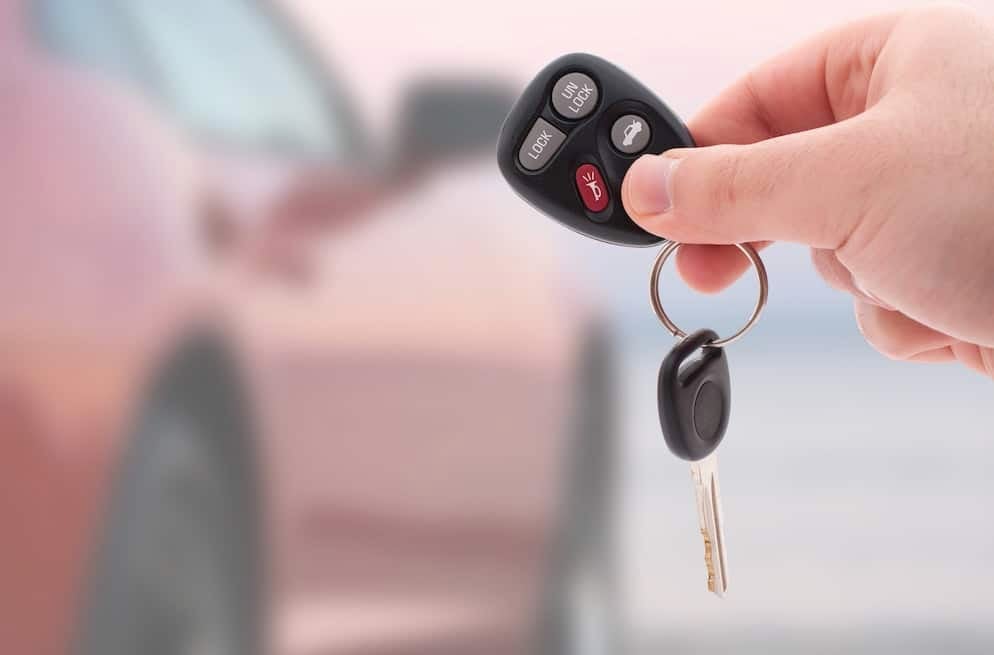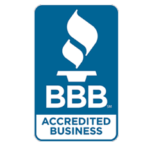Definable Inconsistency: Investigating Common Red Flags

Definable inconsistencies are circumstances which a Private Investigator comes across, upon conducting an investigation, that are different from the “usual” findings or known mechanisms of a typical scenario of a claim. If an investigator, for instance, discovered evidence about the investigation that seemed inconsistent, and unusual, based on his or her previous claims expertise and experience, verifying these facts is highly recommended.
The inconsistencies should be objective and concrete – they should be definable, and not based on gut-feelings, or subjective. There must not be any personal feelings involved, like “you did not like the way they treated you over the telephone” or “you have an intuition”. You should be able to state and define any inconsistencies before it becomes the basis of why the claims are questionable.
An example of a common definable inconsistency is a person claims their vehicle stolen only after it being involved in an accident. Even if the statements that person and witnesses provided sounds credible, this inconsistency is both definable and objective and requires additional investigation.
Common clues:
Information missing in a claim application that is associated with prior claims.
Claim submitted a short time after a policy is purchased.
For the above cases, additional investigation should be conducted to verify the claim’s facts. Indicators are sometimes referred to as “red flags” and below you will find common examples of usual inconsistencies we find that require further investigation:
Arson for Profit
A homeowner, vehicle owner or business owner intentionally sets his/her own property on fire. This may be a property owner’s way to recover from a huge amount of debt on their property. The claims are not only limited to structural or vehicle damages, valuables are often claimed as affected or destroyed.
Common Private Investigator Initial Objectives: Canvass of the neighborhood for sources, and witness interviews. Interviews with the responding officers and fire crew. Scene photos and video retrieval.
Staged Burglary or Theft
The insured takes an item of value out of the building and sells these items, prior to making the claim. The insured might also have purchased the items only for the purpose of obtaining a receipt, and returns it back to the shop for a refund after the claim is settled.
Common Private Investigator Initial Objectives: Receipt verification and insured interview for facts surrounding claims. Verification of all circumstances leading to the theft and neighborhood canvass.
Catastrophe Fraud
Natural disasters such as hurricanes, tornadoes and earthquakes at times are followed by an increase in false disaster fraud claims and reimbursement requests, such as inflation of claimed losses, fake repairs, lost services or missing items still in the possession of the insured. Some claims are filed for items never in their possession, this is typically accompanied by exaggerated structural losses and auto claims for vehicles that were nowhere near the site of the catastrophe.
Fraud in such cases is easier to arrange considering the massive amount of claims, and the fact that some of the reps handling the claims are not living in the area where the disaster struck.
Common Private Investigator Initial Objectives: Interview with the individual or business representatives making the claims, and request for photos and receipts of the claimed items. News reports searches, weather report search, and photos of the areas immediately following the natural disaster.
Residential Liability and Commercial Insurance Frauds
Most residential insurance claims are based on properties loss, followed by personal or bodily injuries:
Slip and fall. Fraudsters take advantage of unattended residential stairways, or obstructed or broken sidewalks to file fraudulent claims. An example is an individual claiming that he stepped on a kid’s toy in the stairway in order to sue the property owner for injuries or damages. Homeowners may be victimized by this kind of fraudulent activity, and a surveillance security system is highly recommended.
Common Private Investigator Initial Objectives:A private investigator would typically interview the insured homeowner for additional information, familiarity with the claimant and any witnesses they are aware of. This is followed by photos and measurements of the steps or sidewalks in question, and inquiries with the local municipalities for any repair records.
Commercial Slip-and-Fall
Slip and falls not only happens in private homes, commercial settings are also common ground for this type of claim. Fraudsters may set up a slip and fall in a convenience store by spilling water on the floor, or drop items in the aisles in order to stage their performance. Besides claiming injuries, claimants also often claim damages to expensive or luxurious personal property as part of the fall.
Common Private Investigator Initial Objectives: Interview with the business owner, and search for any video and witnesses in the area.
Workers’ Compensation Injury Fraud
Employees may falsely claim that an injury happened while at work, but in reality it happened off work. Employees may also fake injuries while at work, or exaggerates a true or legitimate injury in order to extend his or her benefits. The workers will typically charge for medical rehab and treatments, and often involve lawyers and doctors during the process. Under the policy, the business or company will send the employee’s claims to their insurers.
Common Private Investigator Initial Objectives: Interview with the insured business, followed by surveillance of the claimant in order to document their activities.
Product Liability Fraud
An exaggerated or fake product liability claim involves all kinds of products, but foods seem to be the fraudster’s favorite. Perpetrators often claim that they are suffering from trauma or sickness after finding a foreign object in their food – they are targeting the manufacturers in most cases.
Common Private Investigator Initial Objectives: Photos and inspection of package or food item in question. Review of claimant background history for financial hardship or prior claims history. Review of location where claimant purchased product and interview with employees there.
Vehicle Fraud
Owner give-up
Owner give-up is the term used for the kind of claim that involves normal cars or compact sports cars where the insured experiences great financial difficulty, owes a lot more than the car is worth, or faces huge supplementary mileage charges towards the end of the car’s lease term. This is also common when their vehicles begin to experience out-of-warranty mechanical issues.
One common solution fraudsters gravitate to includes giving up the car to a chop-shop (mechanic), and then reporting the car stolen. Chop shops will take apart all of the usable parts, and then leave the vehicle’s shell either on the side of the road, or sell it to a junkyard. Other fraudulent alternatives are to drive the car and submerge it in a river or in a field for burning, or just completely abandon the vehicle. All of these scenarios are followed by a theft claim.
To point out owner give-up, here are the possible indicators.
Common Private Investigator Initial Objectives: Interview with the insured involved, and anyone who may have come in contact with the vehicle around the date of loss. A good thorough initial interview usually reveals many leads and inconsistencies as the person, unless coached very well, is typically unprepared for the heavy amount of questioning involved. Questions about garaging, and details are key.
Other vehicle theft fraud include boating fraud where boaters fabricate paperwork about the boat’s cash purchase – bill of sale, title or anything else related to the boat. The boater registers the “ghost” vessel with his state, and purchases an insurance policy for it. The boater then reports his “boat” stolen, files a police report and files and insurance claim. This same scheme is also used for motorcycles and heavy equipment, and used construction vehicles. This type of fraud is also known as paper theft.
Body Shop Fraud
The facility may opt to repair the vehicle using old or surplus parts instead of brand new ones, or just repair a vehicle’s part instead replacing it as stated in the receipt. The shops also find, repair and bills “hidden” defects that in reality never existed. Shops may also create more damages to work on and repair. These same shops typically engage in the same chop-shop activities mentioned above.
Common Private Investigator Initial Objectives: Interview with the body shop, and insured. There are times when the insured are in cahoots with the bodyshops, other times, they have no idea.
Organized Group Fraud
Indicators – Investigating Organized Groups
There is a long list of organized group fraud indicators. Below are some of the indicators applicable to “casual accident” that you may be familiar with. The following indicators might be spotted by a claims representative, a private investigator, or medical bill reviewer
- Mystery vehicle cuts off the claimant’s car causing the mishap.
- All, if not almost all the individuals injured during the mishap present medical bills from a similar medical facility and/or doctor, and use the same lawyer.
- Multiple passengers impacted by the accident are claiming the same type of injury.
- Treatment is unnecessary or extensive for minimal, subjective injuries.
- History of previous claims.
Common Private Investigator Initial Objectives: Interview with all the persons involved. Inspection of medical facility.
Indicators for Private Investigators
Insurance companies and Private Investigators have a huge range of informational sources available for them. Skilled investigators make use of these sources to probe thoroughly in order to look further into any fraud indicators that were identified by adjusters. Investigators may also uncover additional indicators during the investigative process. The most common indicators include:
- History of the prior claim/s
- Clinic ownership is dubious
Other Organized Group Insurance Fraud
Paper/Caused/Staged Accidents: Organized Groups are commonly engaged in these 3 types of accidents plots/schemes:
Orchestrated Incident
This kind of accident is where the “alleged collision” or the “collision” was never accidental. After purchasing a policy, they will use the insured vehicle and another, both with prior damage. The vehicles will be placed at a scene where it appears like an accident just took place. They will then contact the police, and the claimant vehicle would usually have multiple passengers in it, all claiming injuries.
Fraudulent Accident
This is when a real accident occurs. The organized group here targets the insured. They will stage an accident and ensure that the insured is completely liable. Example of which is slamming the vehicle’s brakes in front of the insured’s vehicle, while blocking the insured vehicle’s sides.
Paper fraud
This kind of accident only happens on paper. The organized group members will “call in” or “walk in” an accident report together with the police, stating that an accident happened. Most of the time there are no injuries reported in this kind of accident report.
Medical Billing Fraud
In this kind of fraud, a clinic may pay a patient so they can utilize their insurance information, or use patient’s information without the patient’s knowledge. A dishonest clinic can also bill for the use of medical supplies which the clinic does not even own. The clinic’s office personnel and doctors bill the insurance companies for treatments that never took place, and at times, extends these treatments for a long period of time. They may bill and prescribe medical supplies from a closed medical supply business, or whose supplies never existed nor delivered to anyone.
Other Group Insurance Fraud
Public adjuster fraud
Public adjusters who receive payment in return for helping them negotiate claims between the insurance company.
Nomadic Fraud Gang
This family-related group may travel from state to state, town to town, to pull off different kinds of insurance fraud. Their plots can include staged vehicle accidents, theft or slip and falls.
Commercial Premium Fraud
The business or company owner can misrepresent the nature of business of the company, the amount of employees, or the employee’s responsibilities, so they can get coverage with lower premiums than what they would otherwise pay in the first place.
Slip and Fall
As previously discussed, individuals file false slip-and-fall claims on commercial and residential insureds. There are times when this kind of fraud is also done by organized groups, where at least 2 people are part of the scheme, a witness and the actor who fakes the fall.
Application Fraud
Policy applicants supply wrong information (or remove answers) so they can reduce premiums, to obtain coverage, or to invent fraud, like a “paper accident”, where no actual cars or automobiles were involved.
Another variation of this kind of fraud is the “rate evasion” where the insured lies about the real location where the vehicle is garaged so they can obtain lower premium rates.
The underwriter and agent share responsibilities in making sure that the applications are answered completely, accurately and signed, and for looking for possible indicators of application fraud.
Identity Theft Insurance Fraud
What if the fraudster takes out policies using fake names or false social security number owned by someone else, or even use someone else’s driver’s license? Insurance agents should persist in asking for a valid identification card (ID) and retaining a copy of it. Agents can also note inconsistencies like stated income evaluated versus the type of neighborhood or locality they reside in, versus the price of the vehicle insured.
The above list of red flags are only the most common types a Private Investigator and Lawyers come across, this is, by no means, a complete list. Subscribe to our blog for updates as we release additional articles (press the red arrow at the top left of the page) and contact us for questions or comments.



